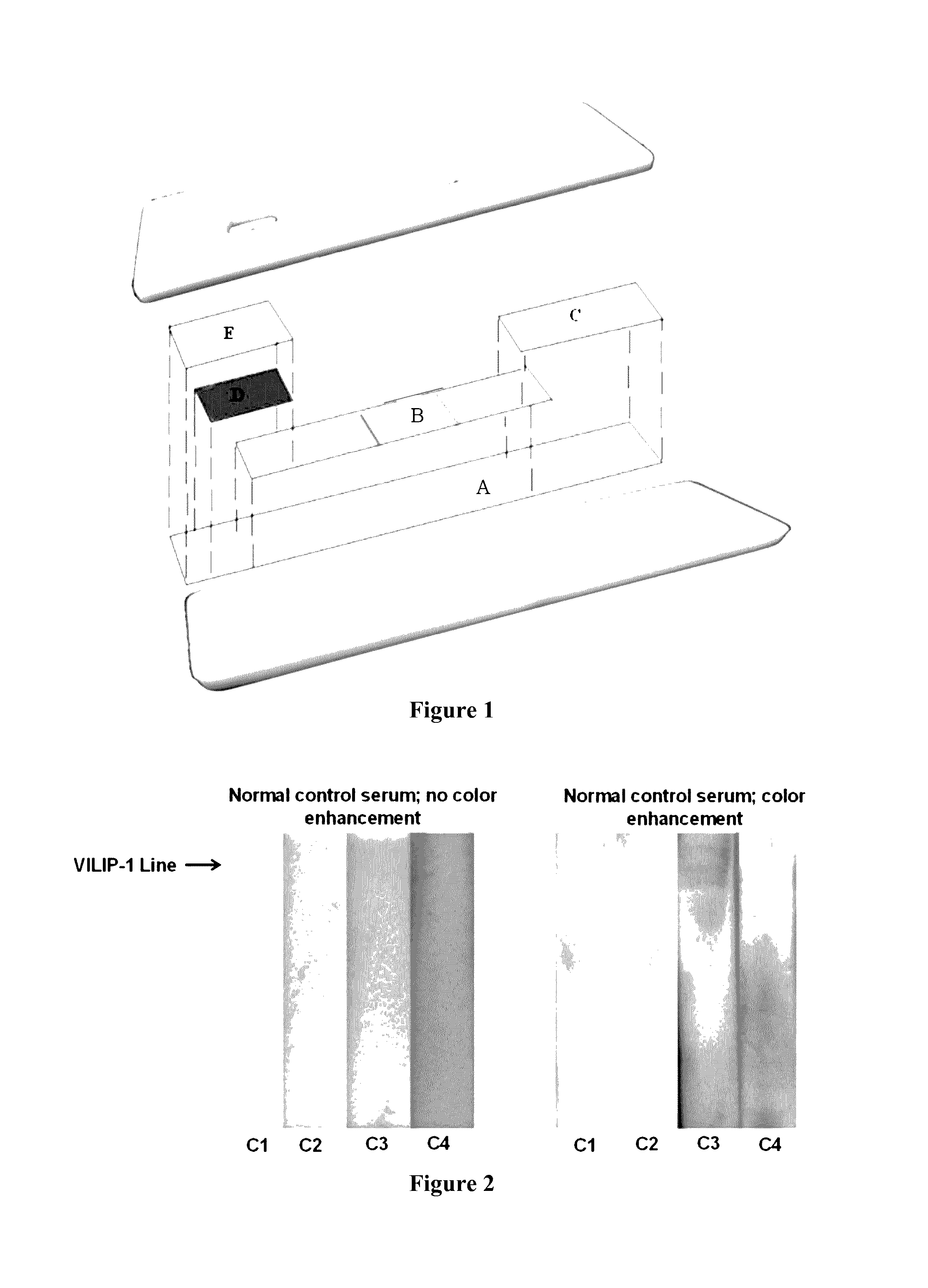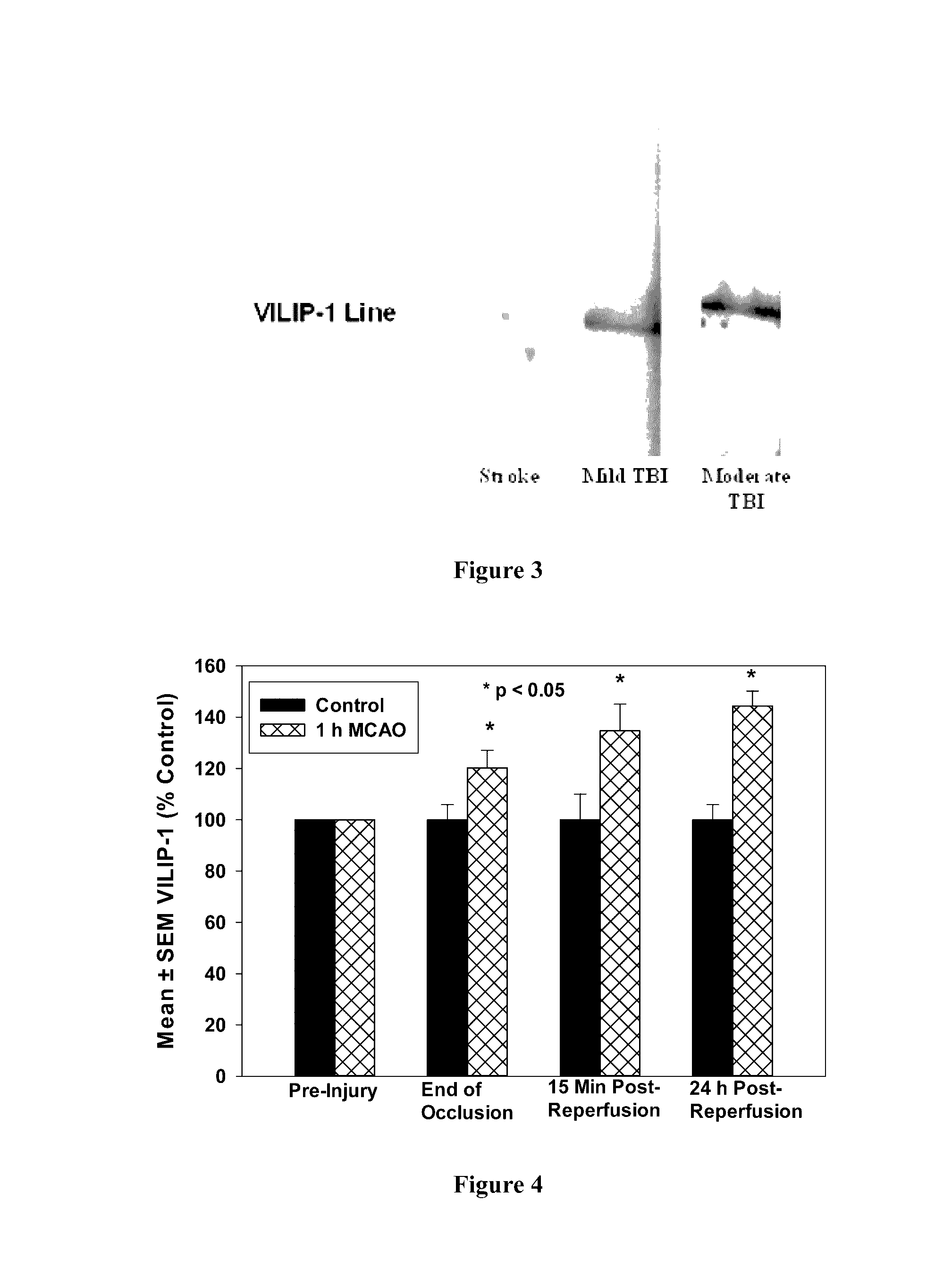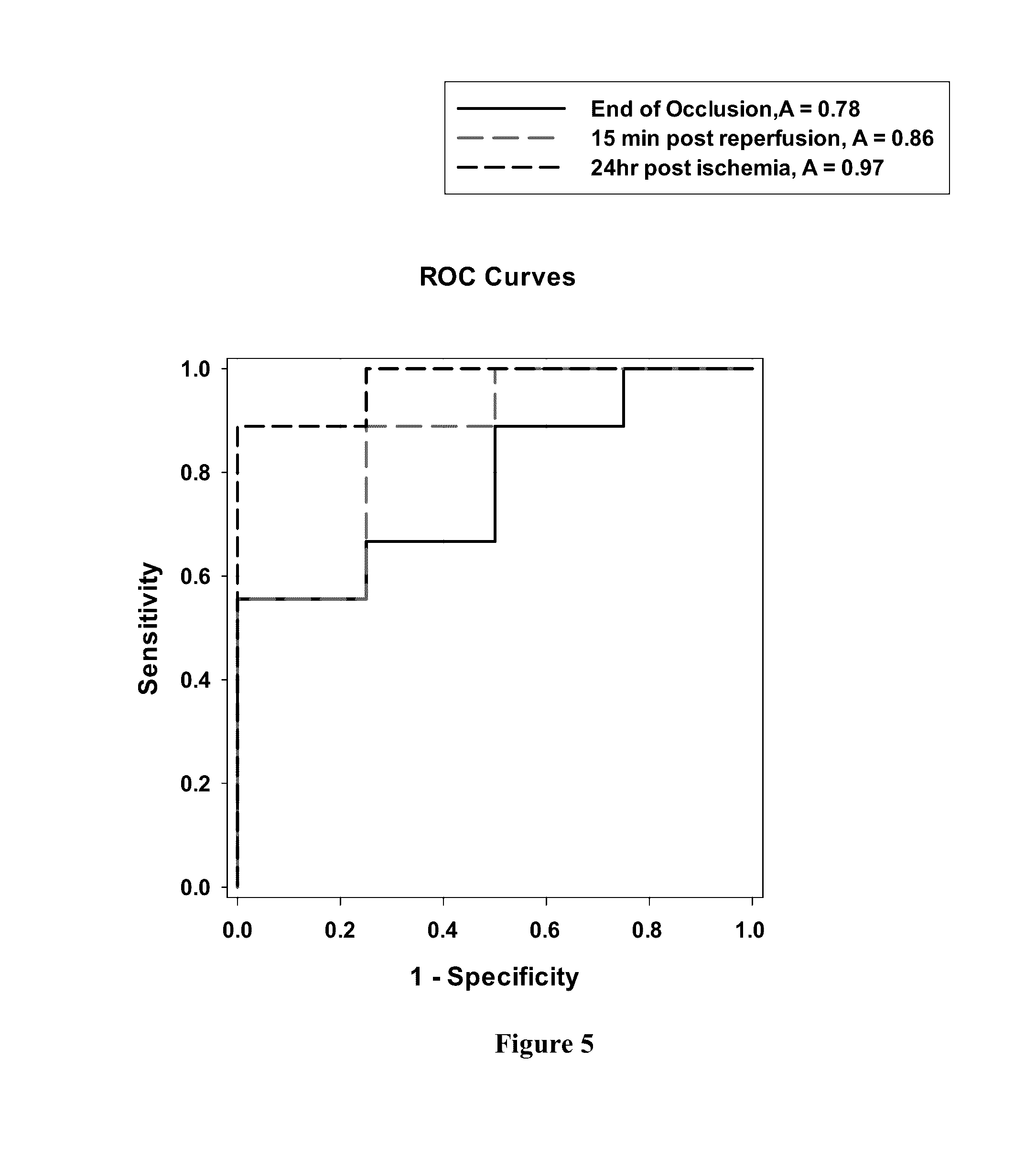Methods and systems for prognosis and diagnosis of brain damage
- Summary
- Abstract
- Description
- Claims
- Application Information
AI Technical Summary
Benefits of technology
Problems solved by technology
Method used
Image
Examples
example 1
[0067]This Example describes a method for preparing a lateral flow device for detecting the presence of VILIP-1 in a biological sample. As shown in FIG. 1, the lateral flow device comprises of a combination of membranes that remove cells (e.g., whole blood) and serum albumin (e.g., rat or human) from a biological sample, nanogold labeled anti VILIP-1 raised against the N terminus of human VILIP-1, and a narrow line near the terminal end of anti-VILIP-1 antibody raised against the C terminus of human VILIP-1. More specifically, and still referring to FIG. 1, the lateral flow device comprised a laminate backing (A; MIBA-010; Diagnostic Consulting Network, Carlsbad, Calif.), a sample portion for receiving a biological sample (E; Vivid Plasma Separation-GX; Pall Corporation, Port Washington, N.Y.), a conjugate portion (D; Pall, Grade 896), a detection portion (B; Unisart CN140 Nitrocellulose Membrane, 42 mm; Sartorius Stedin North America Inc, Bohemia, N.Y.), and a wicking portion (C; W...
example 2
[0073]This Example describes procedures conducted to evaluate how the embodiments of lateral flow devices that were prepared in Example 1 can be used to detect the presence of VILIP-1 in subjects having brain damage, including brain damage caused by ischemic stroke or TBI.
[0074]First, using recombinant VILIP-1 as a standard protein, a limit of detection of 0.2 ng / ml serum and a linear response between 0.2 ng / ml and 7.0 ng / ml was detected (r2=0.91). FIG. 2 shows levels of VILIP-1 in normal control serum are below the limit of detection. Thus, the lateral flow devices were capable of detecting the presence of VILIP-1 in biological samples.
[0075]To determine if serum VILIP-1 levels change in due to ischemic stroke, animals were subjected to a 1 hour middle cerebral artery occlusion (MCAO) using the Zea Longa method. Specifically, nine three-month-old Sprague-Dawley rats (250-300 g) were subjected to a 1 hour ischemic event induced by suture occlusion of the middle cerebra artery. Contr...
example 3
[0078]This Example describes the relationship between VILIP-1 levels and brain damage that were observed using the procedures described in Example 2. Specifically, this Example describes how VILIP-1 levels were affected by the induced ischemic stroke and TBI in rat subjects.
[0079]As described above, whole blood (10 μL) were analyzed at the time of draw and the remaining blood samples were centrifuged to prepare serum which was analyzed from all time points later. FIG. 3 shows that levels of VILIP-1 in serum were considerably higher in mild TBI compared to ischemic stroke 1 hour and 15 minutes post injury, thereby suggesting that TBI can induce more pronounced neuronal injury (i.e., brain damage). Without being bound by theory or mechanism, VILIP-1 levels for subjects having experienced hemorrhagic stroke can be comparable to those observed in TBI because hemorrhagic stroke can cause severe tissue damage. Thus, optionally when combined with clinical presentation, the presence of VILI...
PUM
 Login to View More
Login to View More Abstract
Description
Claims
Application Information
 Login to View More
Login to View More - R&D
- Intellectual Property
- Life Sciences
- Materials
- Tech Scout
- Unparalleled Data Quality
- Higher Quality Content
- 60% Fewer Hallucinations
Browse by: Latest US Patents, China's latest patents, Technical Efficacy Thesaurus, Application Domain, Technology Topic, Popular Technical Reports.
© 2025 PatSnap. All rights reserved.Legal|Privacy policy|Modern Slavery Act Transparency Statement|Sitemap|About US| Contact US: help@patsnap.com



